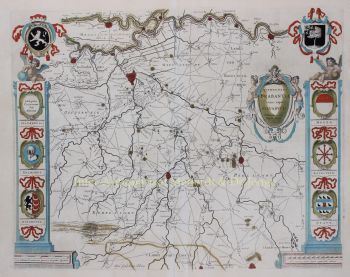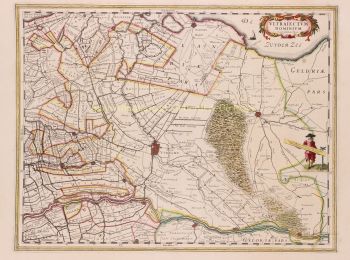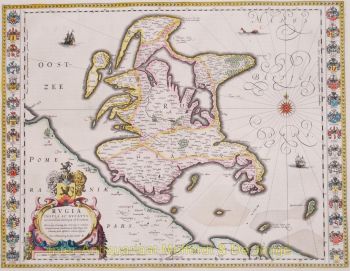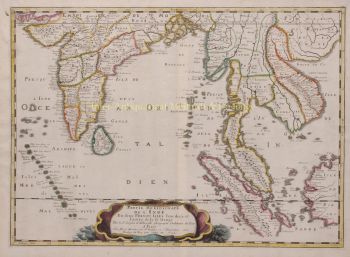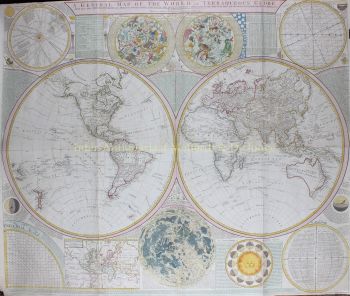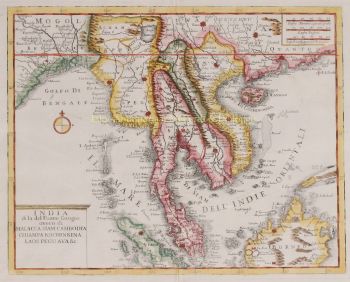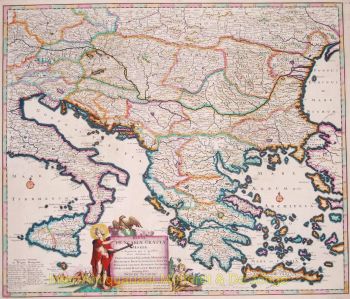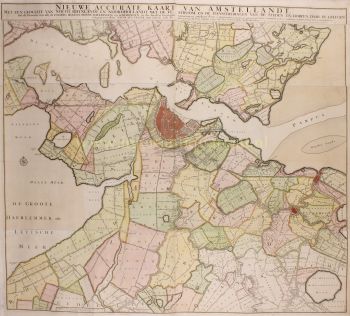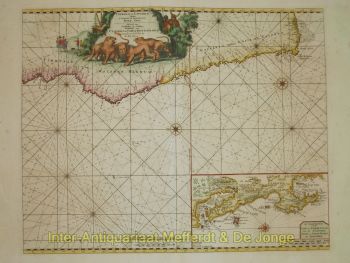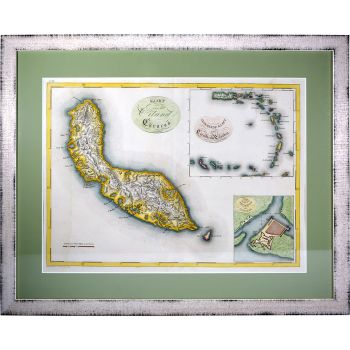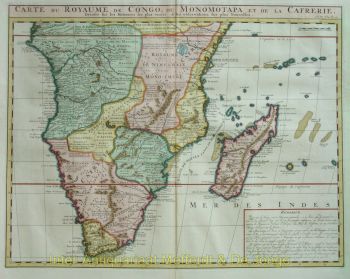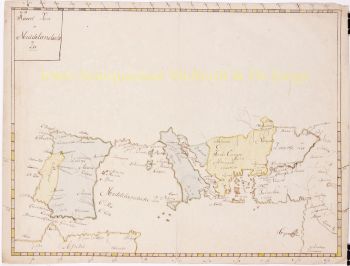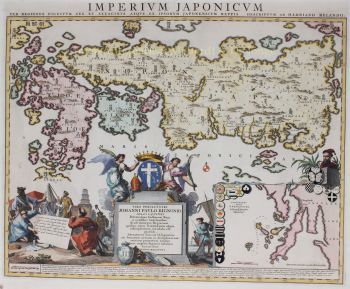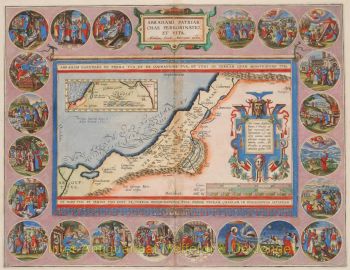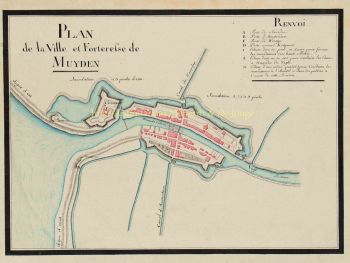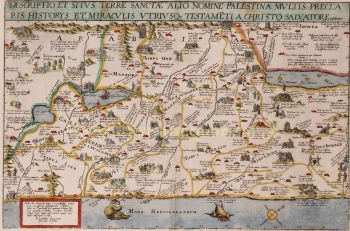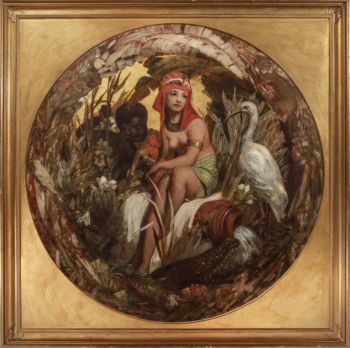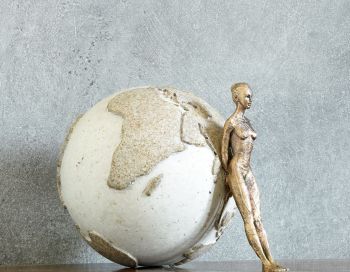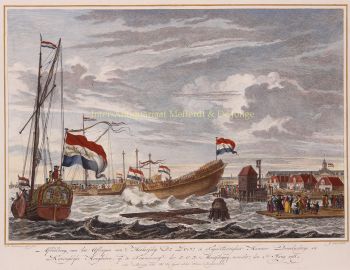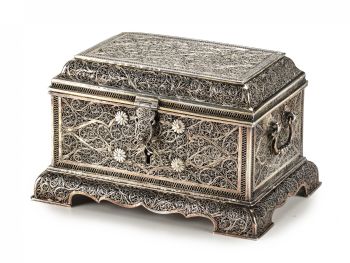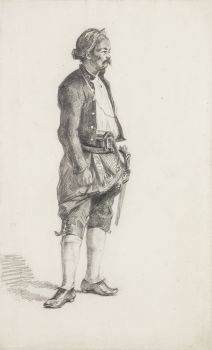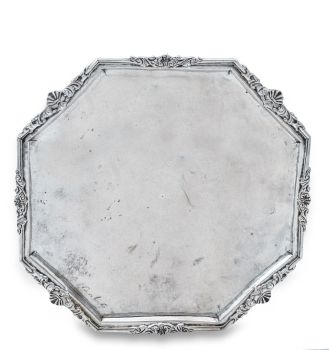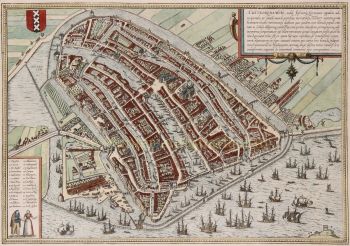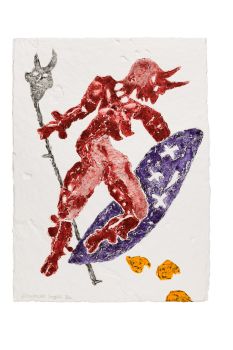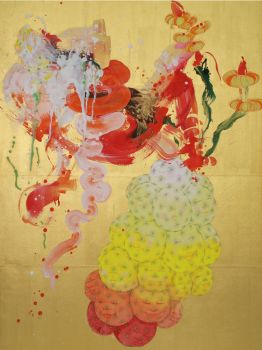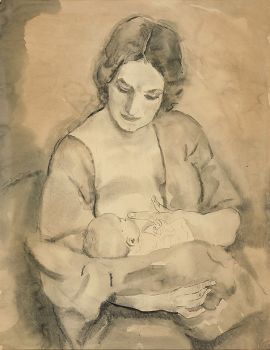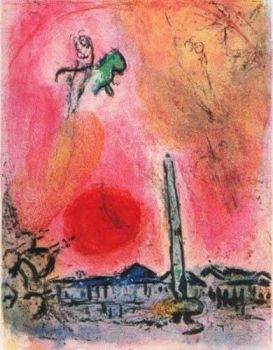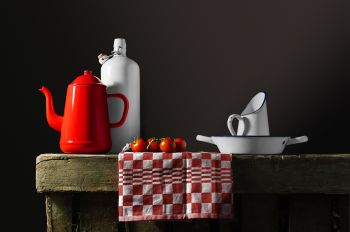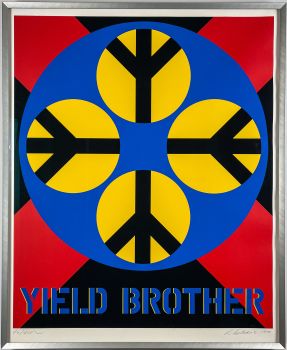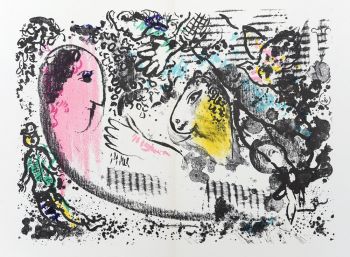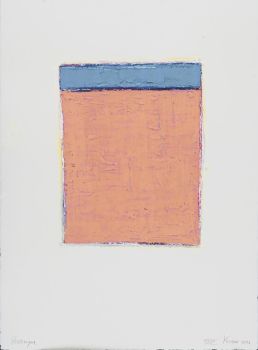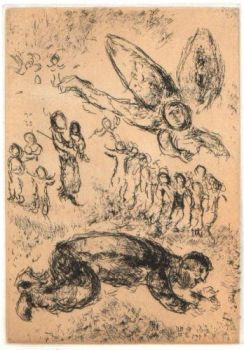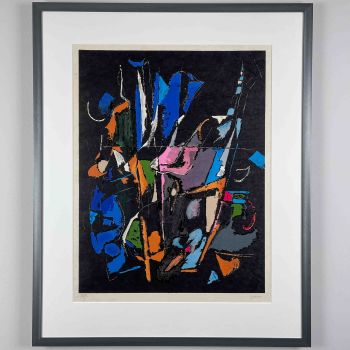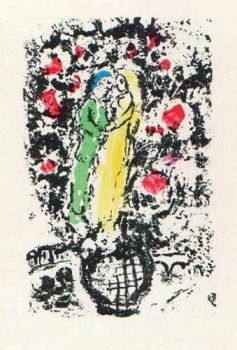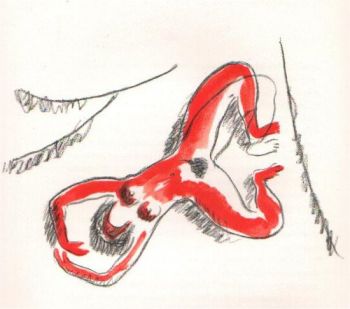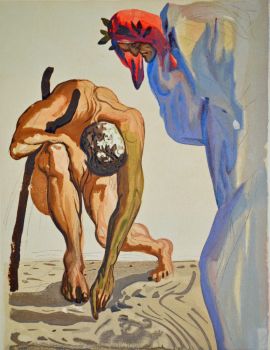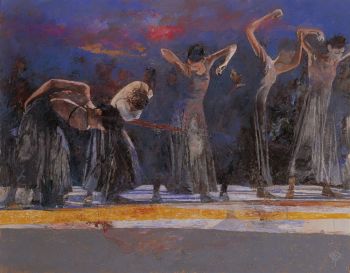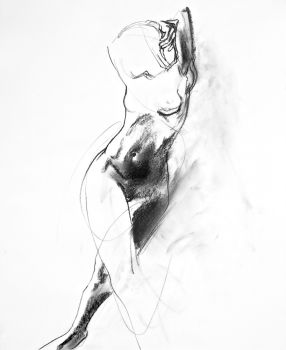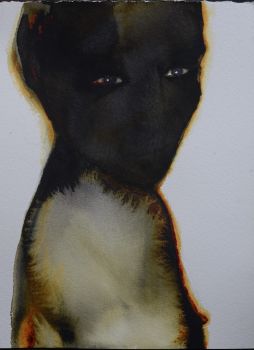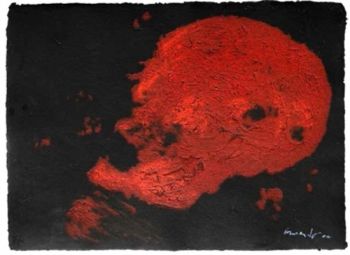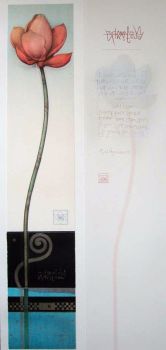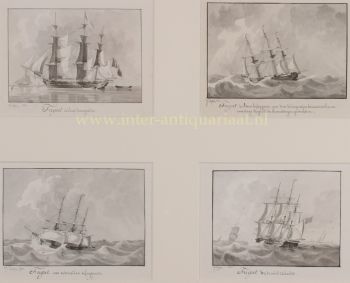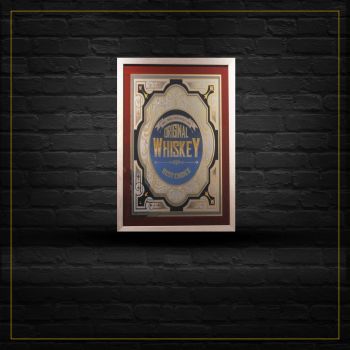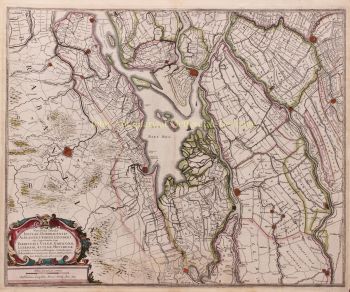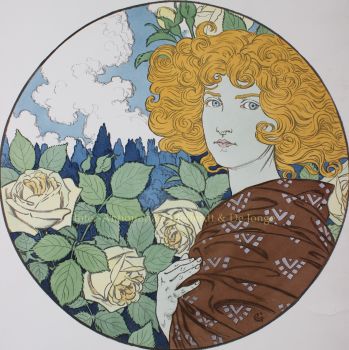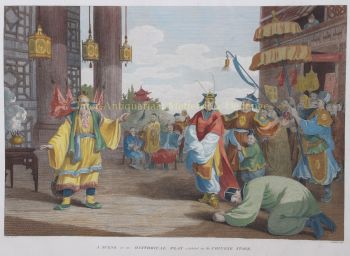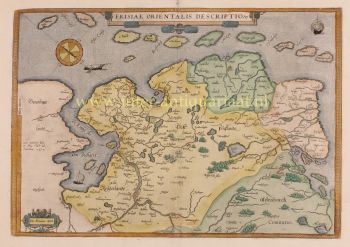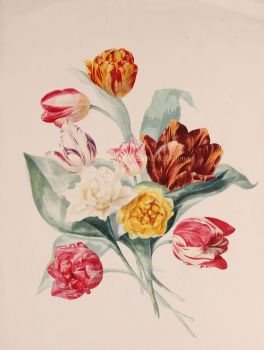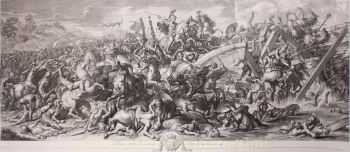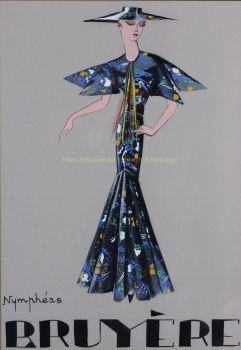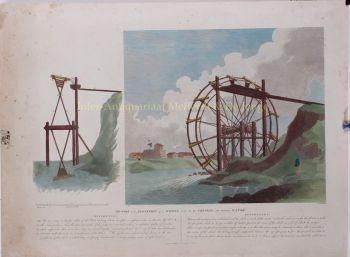World map 1606
Willem Janszoon Blaeu
TintaPapelImprimir
41 ⨯ 55 cm
€ 11.500
Inter-Antiquariaat Mefferdt & De Jonge
- Sobre arteICONIC WORLD MAP BY WILLEM BLAEU "Nova Totius Terrarum Orbis Geographica Ac Hydrographica Tabula" copper engraving first published in 1606 by Willem Blaeu in Amsterdam. Coloured by a later hand. Size: 55 x 41 cm. Nice example of Blaeu's classic world map in the so-called Mercator projection. This is one of the most famous landmarks of 17th-century cartography. Engraved and signed by Joshua van den Ende, reduced from Blaeu's wall map of 1605, it first appeared as a separate publication in 1606. In 1630 it was incorporated into Willem Blaeu's "Atlantis Appendix" and then into the "Atlas Novus" in all subsequent editions until 1658. Its influence was enormous, and it was closely copied by some of the greatest Dutch cartographers, such as Pieter van der Keere and Johannes Janssonius. Others, such as the house of Hondius, were forced to produce their own highly decorative maps to compete. Geographically, the map was a reduction of Blaeu's large map of the world published in 1605. The charming cartouche in the interior of North America mentions its discovery by Columbus in 1492 and being named after Amerigo Vespucci in 1499. There is some confusion in the depiction of the landmass of the East coast of the United States, probably as a result of Indian reports of large bodies of water inland, almost certainly the Great Lakes. California is correctly shown as a peninsula. The Le Maire straits, separating Tierra del Fuego from South America, copied from an earlier map by Hondius, are clearly shown. In the north, a note beside "Nova Zembla" in the Arctic declares that it was reached by Willem Barentsz in 1596. In the Far East Korea is shown as an island and northern Australia is shown without any place names. Decoratively the most striking features of this map are the magnificent and innovative panelled borders. The upper border shows allegorical figures of the sun and moon and the five known planets; Mercury, Venus, Mars, Jupiter and Saturn. Along the bottom border are depictions of the seven wonders of the ancient world; the Hanging Gardens of Babylon, the Colossus of Rhodes, the Great Pyramid at Giza, the Mausoleum at Hallicarnassus, the Temple of Artemis at Ephesus, the Statue of Zeus at Olympia and the Lighthouse of Alexandria. Running down the left hand side of the map are representations of the four elements (Fire, Air, Water and Earth) and on the right, the Four Seasons. In the cartouche in the lower right Blaeu dedicated the map to Cornelis Hooft, the Dutch merchant and Amsterdam regent during the Golden Age. . Reference : Rodney Shirley "The Mapping of the World', no. 255 Price: Euro 11.500,-
- Sobre artista
"Willem Janszoon Blaeu e seu filho Joan resumiram a 'era de ouro' da cartografia holandesa. Trabalhando durante o século XVII, Willem Blaeu desenhou uma série de mapas inovadores e publicou o primeiro atlas.
Ele nasceu em 1571 em Amsterdã e trabalhou inicialmente como balconista no comércio de arenque da família. No entanto, ele não estava feliz com sua ocupação e saiu de casa em 1594 para estudar matemática com Tycho Brahe, o famoso astrônomo. Blaeu era um bom aluno que impressionou muito seu tutor e, quando seus estudos terminaram, ele voltou para Amsterdã e abriu um negócio como cartógrafo. Seu negócio floresceu e sua reputação cresceu. Ele foi o primeiro cartógrafo a produzir mapas de folha única de muitos países europeus.
Em 1605, ele fez um mapa-múndi de parede, contendo 20 folhas, cada uma com 2,5 metros de largura. Este mapa foi de longe o mais preciso do período e deu uma contribuição notável para o conhecimento da geografia mundial.
Seu mapa permaneceu o mais preciso até 1648, quando seu filho, Joan, que também se tornou um famoso cartógrafo, o atualizou. Mas sua maior conquista foi a produção do primeiro atlas em 1630. O nome Blaeu era na verdade um apelido de família que Willem adotou depois que ocorreu uma confusão entre ele e seu grande rival Joannes Jansonius.
Você está interessado em comprar esta obra de arte?
Artwork details
Related artworks
- 1 - 4 / 8
- 1 - 4 / 24
Artista Desconhecido
Japanese transition-style lacquer coffer 1640 - 1650
Preço em pedidoZebregs & Röell - Fine Art - Antiques
 Com curadoria de
Com curadoria deDanny Bree
1 - 4 / 24- 1 - 4 / 24
- 1 - 4 / 12



